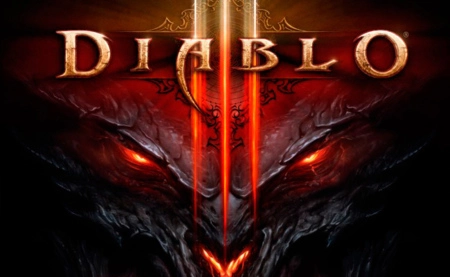Last weekend I participated on the public beta of Diablo III, and these are my quick impressions about it.
Disclaimer: I had very little experience with the Diablo saga, so I will draw most of my comparisons to World of Warcraft. Also, I could only play the beta six hours total. But, hey, you can still get something from this review, I’m sure.
The main point of novelty for me was the possibility of taking the quests online whenever you feel like. At the menu where you select your character to continue playing, you can choose between going single player or going public. Random people from the internet that are at the same point of the game as you join your party, and you can go all go questing together. Next time you log in, you are presented the same choice again.
I think that is an awesome idea to mesh the desires of single- and multi-play enthusiasts without the need for separate gameplay modes. In the game you can already pick up and abandon companions along the way. The more people you bring with you, the higher the difficulty the game automatically sets. At the core of its own gameplay, Diablo III has random generation of challenges (maps, enemy, treasure) as one of its bannerets. So when instead of an NPC you are joined by a kid from Tunisia, the game just pushes the difficulty a bit more (players still outsmart computers), increases the loot, and that’s it. A seamless integration.
Albeit the questing is a bit lineal (which I fear might end up feeling too much like continuous grinding, although it didn’t so far), the game functions like most computer RPGs. I had some reservations about the move-by-clicking system, in a graphic adventure manner, but it enables a more laid-back one-hand playing mode which I found fits the overall more casual approach it takes. Skills, for example, present not so much of a choice and most of the time don’t need to be continually swapped (remember this was just a small chunk of the beginning of the game, it may change later).
Before I abandon the clicking issue, I must mention that picking up the loot is a game of darts. The labels for the fallen objects are too small and it becomes an annoyance. I understand that making them bigger would clutter the screen and cover incoming enemies or traps, but I’d prefer Blizzard take a note from World of Warcraft in this regard and show a small loot window upon clicking the corpse.
Speaking of World of Warcraft, one of the things I always praised Blizzard for was not being afraid of dashing the game with colors. Many times feel like modern productions are bathed in a brown, black paint that hinders contrast and makes the screen a dull mess (often I don’t know what is going on when I see screencaps from Skyrim).
In this case, Diablo is purposefully going for an apocalyptic look (hell is raised, after all). There’s no place for happy pinks, oranges, yellows in gloomy Tristam. But even if that is so, it still manages to have a clear contrast and variety in the interface and characters. The artistic direction, in one word, is noteworthy.
What I am afraid of is that this “apocalyptic” excuse would mean that all cities and landscapes in the game will end up looking the same, by overusing the same palette over and over again. In WoW, the transition and personality of the zones were reflected first and foremost by their colour palette. You’d move from Stonetalon Mountains to Desolace, from Darkshore to the Azuremyst Isles, and even though the setup (barren landscape, lushing forest, in those cases) were similar, the change of the gamut made you realize you were in a different environment. Color is a powerful tool in worldbuilding, imbuing every zone with a personal look.
My final note is a big kudos to the team in one of the aspects that surprised me the most. Sometimes, when faced with a new enemy or after entering a new zone, a small button came up in the lower right corner. By clicking on it, a character from the lore (that perhaps you met before, or saw referenced) would read a little excerpt explaining to you the events that happened in that place or the origin and background of that particular monster. This non-obstrusive way of explaining lore, that you could pay attention to while slaughtering other mobs or walking to your destination, completely obliterates the main dilemma with rich background RPGs : that is, when you stop to read the signs, you break the flow of action; when you don’t, you miss all the immersion the little details offer. By having them read to you, the action doesn’t come to a stop, and allows the flow of gameplay to continue.
So that’s it. If I had to resume my impression from Diablo 3 Beta is that it is an RPG for a more casual audience. A fine game, quite entertaining; that some people may find repetitive and others may be thrilled exactly because of that.

Podes interaxir con esta entrada de moitas formas: con pingbacks, con webmentions ou simplemente respondendo a través do Fediverso, por exemplo visitándela en Mastodon.